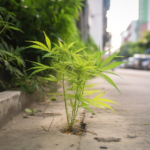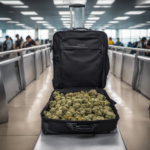George Smitherman, former Ontario politician who now heads the Cannabis Council of Canada, recalls his first legal cannabis purchase at a Tweed shop in Newfoundland in 2018, describing it as an exciting time for the industry. The market was rife with optimism as investment surged into this new domain. However, a half-decade later, this enthusiasm has considerably faded.
Case in point, Aurora Cannabis, a prime cannabis manufacturer based in Alberta, announced its diversification into selling orchids in August, while Canopy Growth sold its Ontario headquarters back to original owner, Hershey Canada. These shifts reflect the industry’s extreme financial struggles and an overall lack of profitability.
As some experts and industry leaders identify an over-regulation of the drug as the main contributing factor to these problems, others point towards an oversaturated market and a far excess production than demand. Being one of the few countries permitting the manufacturing and usage of recreational cannabis on a federal level, the opportunities for domestic producers to gain profits beyond Canadian borders are limited.
When the landmark Cannabis Act was passed in 2018, it targeted moving marijuana users from the illicit market to a legal, regulated one, intending to restrict underage usage and impede the flow of money into the illicit marijuana trade. This legalisation supposedly came with an economic gain for the country and its citizens.
In fact, Deloitte Canada estimated in 2022 that cannabis had added C$43.5bn ($31.91bn; £26.23bn) to the country’s GDP since being legalised. However, Canadians have reportedly lost more than C$131bn investing in cannabis businesses.
The challenges faced were unforeseen as, according to Mr Smitherman, there was no global roadmap to follow. Canada’s breakthrough had been a first on such a large scale. The early imbalance of demand and supply led to overproduction and subsequent downsizing.
Over time, stores were opened in close proximity, resulting in lower prices and attractive incentives to compete. As of 2023, Canada hosts around 3,600 licensed retail cannabis stores and 970 licensed cannabis producers. Nonetheless, only about 20% are generating some positive cashflow, according to a survey by the Cannabis Council of Canada.
Overregulation in an attempt to balance public health interests and the new legal industry is an issue pointed out by many. Cannabis companies cannot advertise their products or create brand recognition. Retail locations operate under rules of tinted windows and government-approved packaging, and they incur higher regulatory fees than other controlled substances industries.
Some argue that these regulations cause the illicit market to thrive due to limitations on the type of products and their potency. Consumers can gain access to edibles with a higher potency than legally permitted, often at lower prices than licensed stores.
Despite these challenges, George Smitherman still considers the legalisation a success. However, the real measure of triumph will be seen in the coming years as the sustainability of cannabis companies in an environment of innovation and increasing market share come into question. According to Professor Michael Armstrong of Brock University in Ontario, Canada’s situation is unique and incomparable with that of any other nation, adding that while legalisation isn’t perfect, it’s still better than the alternative.









